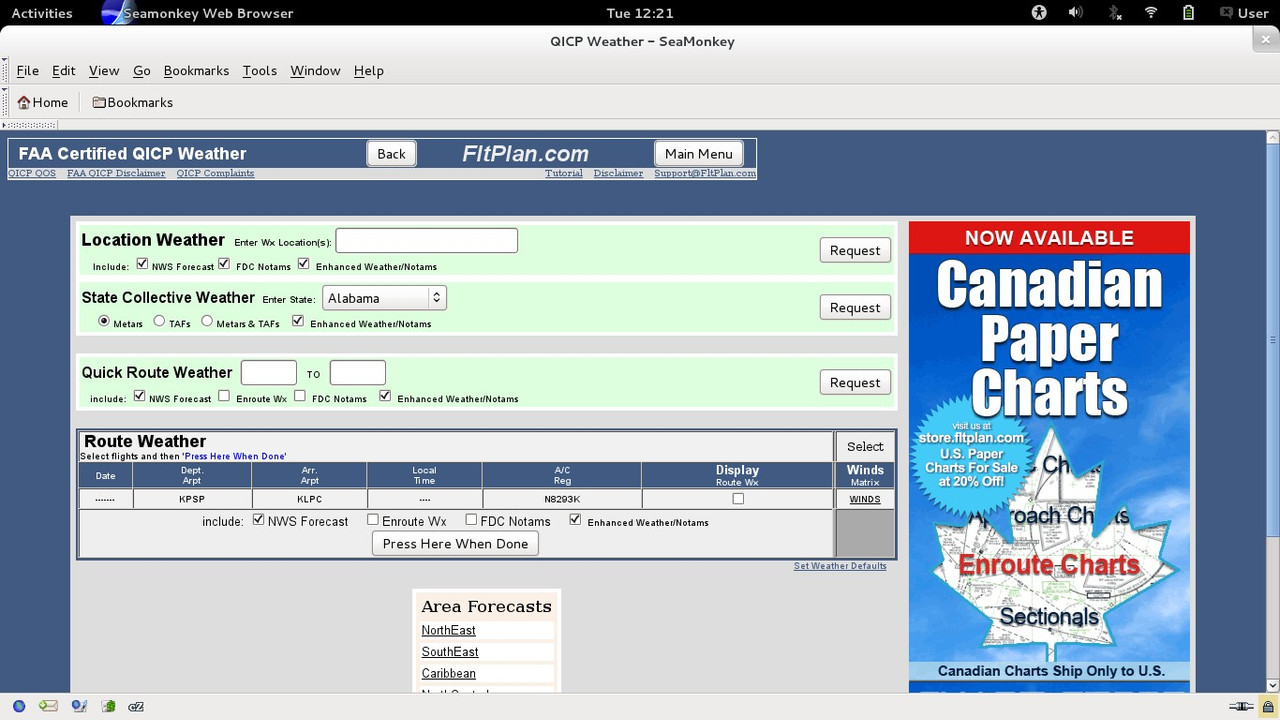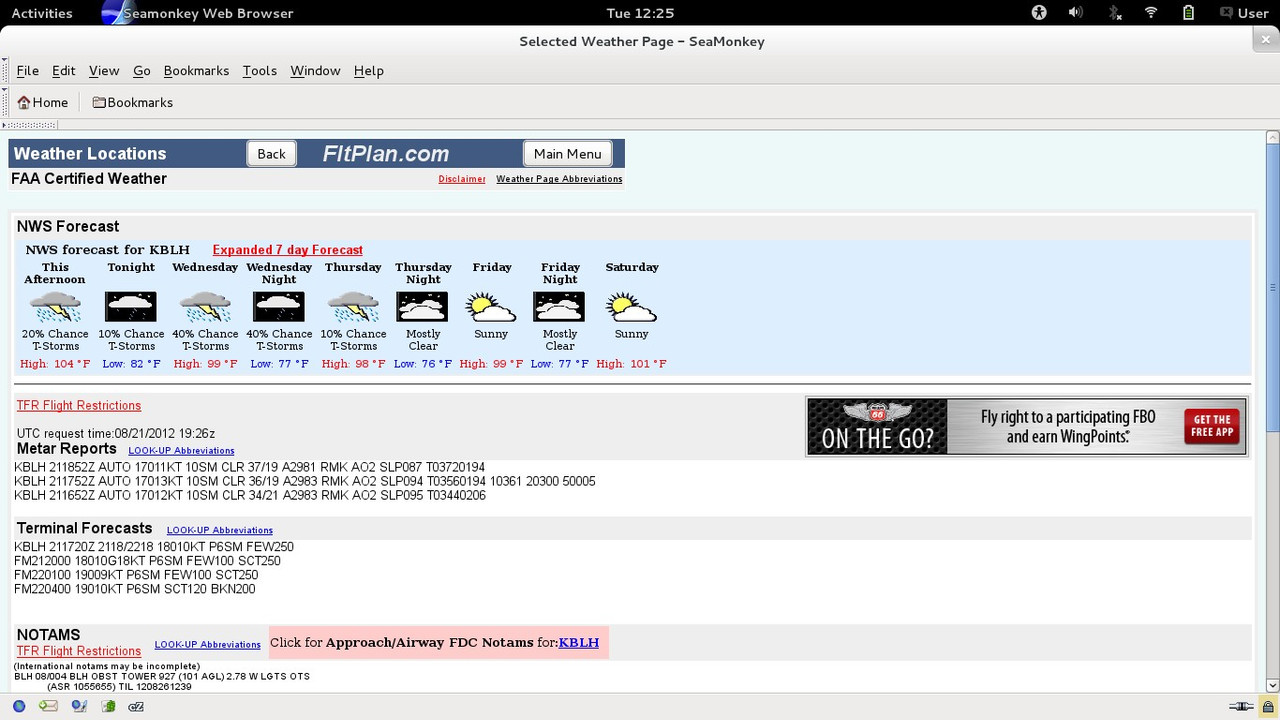Such as?
Several individuals in this thread made this statement and not bothered to explain what they actually use for a legal briefing. Guys, please. Inquiring minds wish to know. Just type, "But I use this and that". The sentence would be even shorter, and actually carry information.
BTW, I should find that thread at PoA where a dude obtained DUATS briefing and then violated an invisible TFR. It went on for pages: suspicions and accusations that he did not read it right, that his computer was broken, testimonies of DUATS being wildly inaccurate (albeit not ending in TFR bust) etc. etc.
This is a long quote from Weathermeister and not sure if this is the answer you're looking for.
"Is getting a briefing on Weathermeister considered legal as far as the FAA is concerned?"
Simply stated: Yes.
Believe it or not, Federal Aviation Regulations actually
do not specify where or how you get your preflight weather briefings. Let's look at
FAR 91.103, which is the sole regulation that provides guidance on this topic. It specifies what we as pilots are required to do before each flight:
§ 91.103 Preflight action.
Each pilot in command shall, before beginning a flight,
become familiar with all available information concerning that flight. This information must include—
(a) For a flight under IFR or a flight not in the vicinity of an airport,
weather reports and forecasts, fuel requirements, alternatives available if the planned flight cannot be completed, and any known traffic delays of which the pilot in command has been advised by ATC;
(b) For any flight, runway lengths at airports of intended use, and the following takeoff and landing distance information:
(1) For civil aircraft for which an approved Airplane or Rotorcraft Flight Manual containing takeoff and landing distance data is required, the takeoff and landing distance data contained therein; and
(2) For civil aircraft other than those specified in paragraph (b)(1) of this section, other reliable information appropriate to the aircraft, relating to aircraft performance under expected values of airport elevation and runway slope, aircraft gross weight, and wind and temperature.
Ironically, 91.103 doesn't even mention the word "briefing" per se, or Flight Service, or anything of that nature. That sure leaves an awful lot to interpretation, doesn't it?
We as pilots have been led to believe that a phone call to FSS for a standard briefing is the only true way to be "legal," yet there is not a single regulation in the FARs that mentions anything about this! The regs don't help to prove this common assumption true...or false.
As you might imagine, this question of legality comes up all the time. We have spent quite a bit of time discussing this with the FSDO. To be specific, Mr. Matt Galica at the FSDO in Louisville, KY has been the resource we have found most helpful. After a long and very informative conversation with Matt, this is what we have learned...
The fact that 91.103 is ambiguous or open-ended is intentional. The FAA does not want to prescribe exactly where or how you obtain your weather information...merely that you do need to obtain it. Mr. Galica discussed the intention of the regulation being what's important, rather than the specifics. The FAA's intention is obviously to make sure pilots are well-informed in order to
make safe decisions. We don't want any surprises or unintended challenges when flying. We do our best to eliminate as many unknowns as we possibly can.
Despite the FAA not spelling out
how you get your weather info, there needs to be accountability. In the case of an accident or incident, we as pilots may need to prove that we actually did obtain the "weather reports and forecasts" per 91.103. Should the need arise, how can we prove this?
Mr. Galica pointed out FSS and DUATS as examples of services that log your briefing. After the fact, there are records maintained for some period of time that serve as proof that you did (or didn't) in fact get a preflight weather briefing. There are numerous sites out there that don't log your briefing...and if you rely on them solely, you'll have no way of proving that you complied with 91.103. By using a site that logs your briefing, you can prove compliance.
All of your
Weathermeister briefings are logged and archived for a period of at least 30 days (briefing requests are logged for at least 90 days). Should you ever need to prove compliance with 91.103, we here at Weathermeister can provide proof that you did in fact get a briefing.
The FAA has a program for certifying online services that provide meteorological data via the internet, and it's called
QICP (Qualified Internet Communications Provider). The criteria center around reliability, accessibility, and security.
Weathermeister is in the process of applying for QICP certification, we have all the required pieces in place (we have for quite some time now), and we hope to have the certification in late 2012. For what it's worth, the QICP requirement for archival is merely 15 days, and as we mentioned, Weathermeister far exceeds that by maintaining a complete archive of all briefing transcripts for no less than 30 days (briefing requests are logged for at least 90 days).
To sum up, in essence the FAA leaves it up to you. If you as pilot in command believe you have obtained all the information you need to complete the flight safely and successfully, and you can
prove that you did, then you are in compliance with 91.103.




